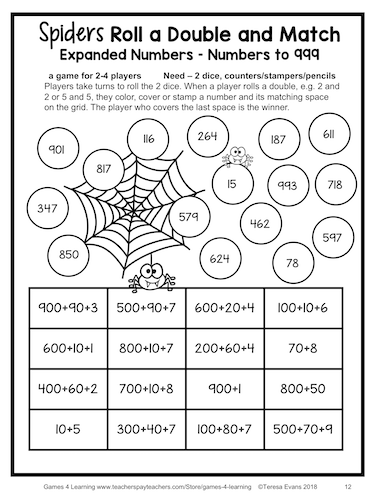
The cost of attendance should be outlined in a financial aid letter. This includes direct and indirect costs. The financial aid letter should also include information on the options available to families for financing attendance's net cost. In order to qualify for federal financial aid, a family must show financial need, and meet the gap between demonstrated need and available resources. This is especially true if a family is applying to an in-state college tuition.
Participation fees
The cost of attendance section in your financial aid letter includes information about the estimated costs of attending school. This includes tuition fees and living expenses. This information can be used to help you determine your eligibility for financial aid. It can also be used to help you figure out how much you'll need to borrow.
Colleges will charge students for tuition, fees, as well as room and board, travel expenses, among other costs. The COA usually falls into one of two categories: billable or not. Billable costs include tuition and fees, which are covered through federal or state grants, loans, or gifts. Books, supplies, and other miscellaneous expenses are not billable. The remaining cost is usually covered by a student's savings. In some cases, students might need to borrow privately to cover the rest of their costs.

Indirect and direct costs
You can calculate your financial aid in two different ways: direct and indirect. The direct costs are the cost of attending school. Indirect costs are the costs you incur beyond college. These can include transportation, books, school supplies, technology, and personal expenses. Colleges may lump together these costs. Make sure to fully understand the costs.
Direct costs are fees and tuition that you must pay to attend school. Indirect costs refer to any expenses you incur throughout the academic year that aren't directly related to your educational objective. They include expenses such as rent, utilities, and other personal expenses. You will need to account for your rent, food and utility bills if you are not on campus.
Loans
Loans in a financial aid letter are available to help pay for school. Students don't have to accept all federal loans. They can choose the loan amount they require later. Federal law gives students the right to up $5,500 in federal loans for their first year. Federal loans do not have to be repaid and may have different terms than private student loans.
It's important that you fully understand all terms before agreeing to any loan. Some loans come with a subsidized option, while others may require a family contribution. Federal student loans tend to be the least costly type of student loan. These loans have flexible repayment options that can be adjusted to your income. It's best to exhaust all government loan options before applying for private loans. To avoid being taken advantage of, make sure you understand all the terms and conditions of your loan.

Unsubsidized loans
Federal student loans can be obtained in either subsidized or unsubsidized form. The only difference between them is the interest rate, and when they begin accruing. Subsidized loans are given to students based on financial need and won't accrue interest during the deferment period. These loans are paid in interest by the federal government.
Depending on your grade level and dependency status, you may be able to borrow a maximum of $20,000 from a federal loan. This chart illustrates the situation. You must repay the loan within 120 days or interest will accrue. By returning any remaining funds early, you can reduce your loan payments.
In-house assistance
Make sure you read through your in-house financial help letter carefully. You need to be aware of important details such as the amount the institution will pay you, the types of aid that you receive, and the expectations they have from you. In addition, it is important to understand the policies of the college or university, especially if you are receiving a gift aid award.
FAQ
What are the types of early child education?
There are many ways you can describe early childhood education. These are the most popular:
-
Preschool - Children ages 2 to 5
-
PreKindergarten- Children from 4-6 years of age
-
Head Start/Headstart for Children Ages 0-3
-
Day Care/Daycares - Children from 0-5 Years
-
Child Care Centers: Children from 0-18
-
Family Child Care - Children ages 0 to 12
-
Home Schooling - Children ages KG to 16
Who can homeschool?
Anyone can homeschool. There are no specific qualifications required.
It is possible for parents to teach their children after they have finished high school. Many families decide to teach their grandchildren while they are still in high school.
Parents with less formal education can learn how to teach their children.
After satisfying certain requirements, parents can become certified teachers. These requirements can vary from one state to the next.
Some states require homeschooled student to take a test in order to graduate. Others do not.
Homeschooling parents need to register their family with local schools.
This involves filling in paperwork and submitting it the school board.
After registering, parents are allowed to enroll their children in public or private schools.
A few states allow homeschooling without the need to register their children with government agencies.
If you live in one of these states, you will be responsible for ensuring your children meet the requirements of the state's compulsory attendance law.
What does it really mean to be an early childhood teacher?
Teacher in early childhood education needs to have specific training. Most states require teaching candidates to get certification from state boards in order to be allowed to teach in public schools.
Some states require teachers to pass tests on subjects like math and reading.
Some states require that teachers complete a specific amount of coursework in early childhood education.
Many states have minimum requirements for teachers. These requirements are not the same in every state.
How do I select my major?
Students choose their majors by their interests. Because they find it easier to study something they love, some students choose to major on a subject that they really enjoy. Some students want to go into a field where there is no job. Others choose a major to make money while they study. Whatever your reason, you should think about what type of job you would like to have after graduation.
There are many ways you can find out more about different areas of study. Talk to your family and friends about their experiences. You can check newspapers and magazines to see if any jobs are listed. Ask your guidance counselors at your high school for information about possible careers. Visit Career Services in your local library. Check out books on various topics from your public library. Search the Internet for specific career-related websites.
Statistics
- Among STEM majors, that number is 83.5 percent. (bostonreview.net)
- They are more likely to graduate high school (25%) and finish college (116%). (habitatbroward.org)
- Data from the Department of Education reveal that, among 2008 college graduates, 92.8 percent of humanities majors have voted at least once since finishing school. (bostonreview.net)
- Globally, in 2008, around 89% of children aged six to twelve were enrolled in primary education, and this proportion was rising. (en.wikipedia.org)
- These institutions can vary according to different contexts.[83] (en.wikipedia.org)
External Links
How To
Why homeschool?
There are many factors that you need to consider when deciding whether or not to homeschool.
-
What kind of education do your children need? Are you looking to develop social skills or academic excellence?
-
How involved do you want to be in your child's education? Is it better to be kept up-to-date about your child's activities? Do you prefer to stay informed about what your child is doing?
-
Is your child a special needs child? How can you help your child?
-
Do you have the ability to manage your children's time? Can you make a commitment to your child's education at home every day of the week?
-
What subjects are you going to cover? Math, science, language arts, art, music, history, geography, etc. ?
-
How much money do your parents have available for education?
-
Is it possible for your child to start school at an early age?
-
Where are you going to put your child? This means finding enough space to accommodate a classroom, and providing sufficient facilities such as bathrooms.
-
What's your child's average age?
-
When is your child supposed to go to bed?
-
When does he/she wake up?
-
What is the time it takes to get from point A and point B?
-
What distance is your child from school?
-
How far is your home from your child's school?
-
How do you get your child to school?
-
What are some of the benefits of homeschooling
-
What are the downsides?
-
Who will watch your child while he/she's outside?
-
What are you expecting from your child's education?
-
What discipline type will you use?
-
What curriculum would you choose?
There are many reasons that people homeschool their children. Some of these reasons are:
-
Your child has learning difficulties that prevent him/her to attend traditional schools.
-
You want to provide an alternative form of education for your child.
-
You want more flexibility with scheduling.
-
High tuition fees are not something you want to pay.
-
You believe your child is receiving a better quality of education than he/she could receive in a traditional school environment.
-
You believe that you can teach your child more than the teacher at a traditional school.
-
You don’t like the way that schools work.
-
You are uncomfortable with the rules and regulations in the school system.
-
You want your child's work ethic to be strong.
-
You want to give your child the freedom to choose what courses you take.
-
You want your child to receive individual attention.
Another benefit of homeschooling is:
-
It is not necessary to worry about uniforms and books, pencils, pencils, paper, or other supplies.
-
You can personalize your child's education according his/her interest.
-
Homeschooling allows parents to spend time with their children.
-
Homeschooled students tend to learn faster because they are not distracted by peers.
-
Homeschoolers often score higher on standardized tests.
-
Homeschool families tend to be happier overall.
-
Students who homeschool are less likely than others to drop out of school.